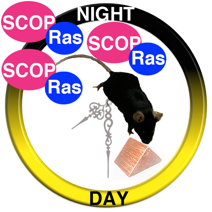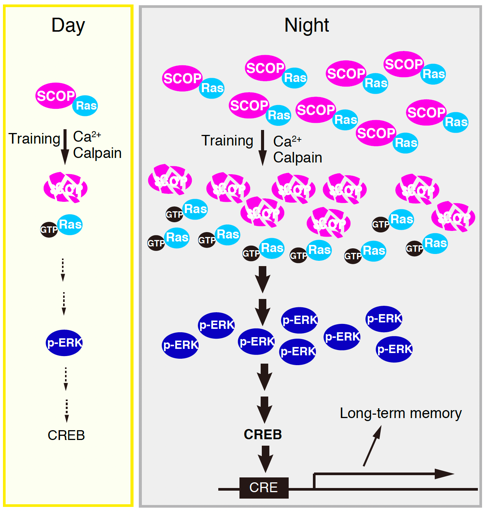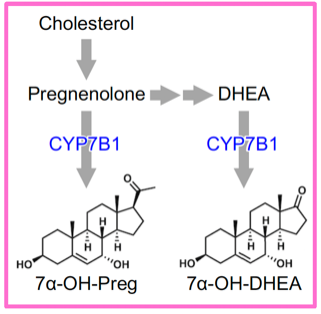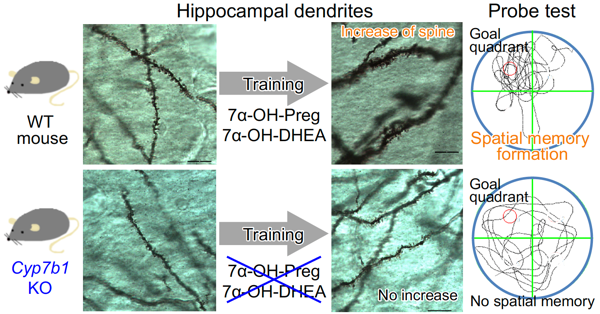1-5-45 Yushima Bunkyo-ku Tokyo 113-8510, JAPAN
Tokyo Medical and Dental University
Medical Research Institute Pathological Cell Biology
TEL: 03-5803-4797 FAX: 03-5803-4821
Kimiko Shimizu, Ph.D. 清水 貴美子

Title: Project Associate Professor
Address: 1-5-45 Yushima, Bunkyo-ku, Tokyo 113-8510, JAPAN
Tokyo Medical and Dental University,
Medical Research Institute, MD building 22F
Email: shimk.pcb (at) tmd.ac.jp
https://researchmap.jp/kimikoshimizu
https://orcid.org/0000-0003-4943-2552
Additional post
- Project Researcher in The University of Tokyo (Center for Disease Biology and integrative Medicine)
Email: shimizuk@g.ecc.u-tokyo.ac.jp - Visiting lecturer in Toho University (Medical school)
Research Keyword

circadian rhythm, SCOP, Ras-MAPK, learning & memory, anxiety, neurosteroids, spine, biochemistry, molecular biology, behavior, mouse, monkey
Research Overview
I investigate circadian changes in memory and emotion and their molecular mechanisms in mice. Using behavioral, biochemical, molecular biological, and genetic methods, I systematically elucidate memory and emotion's molecular and physiological functions through multi-level experiments from molecular to behavioral analysis.

Circadian clocks control long-term recognition memory formation in a circadian manner. Disruption of the central clock (hypothalamic suprachiasmatic nucleus) or the hippocampal clock (loss of clock molecules in the hippocampus) lose circadian change in long-term memory. Circadian variation in the amount of SCOP in the hippocampal lipid rafts regulates the K-Ras-ERK/MAPK-CREB pathway. It produces diurnal rhythm in long-term memory performance (Nat. Commun. 7, 12926, 2016). Anxiety-like behavior in mice also has a circadian rhythm. It is controlled by the circadian clock and SCOP in the amygdala (Sci. Rep. 6, 33500, 2016).
Novel neurosteroids, 7α-hydroxypregnenolone and 7α-hydroxydehydroepiandrosterone, are synthesized in the mouse brain after spatial learning. These steroids contribute to remote memory via remodeling dendritic spines in hippocampal neurons (iScience 23, 101559, 2020).


Selected Publications
- Shimizu K.*, Inoue K., Oishi T., Takada M., Fukada Y., Imai H. Diurnal variation in declarative memory and the involvement of SCOP in cognitive functions in nonhuman primates. Molecular Brain 16, 31 (2023) DOI:10.1186/s13041-023-01022-0
- Takeuchi S., Shimizu K., Fukada Y., Emoto K. The circadian clock in the piriform cortex intrinsically tunes daily changes of odor-evoked neural activity. Communications Biology 6, 332 (2023) DOI:10.1038/s42003-023-04691-8
- Maehata K., Shimizu K.*, Ikeno T., Wang Q., Sakurai A., Wei Z., Pan Y., Takao T., Fukada Y.* Hippocampal 7α-hydroxylated neurosteroids are raised by training and bolster remote spatial memory with increase of the spine densities. iScience 23, 101559 (2020) DOI:10.1016/j.isci.2020.101559
- Wang Q., Shimizu K., Maehata K., Pan Y., Sakurai K., Hikida T., Fukada Y., and Takao T.* Lithium ion adduction enables UPLC-MS/MS-based analysis of multi-class 3-hydroxyl group-containing keto-steroids. Journal of Lipid Research 61, 570-579 (2020) DOI: 10.1194/jlr.D119000588
- Shimizu, K.*, Fukada, Y. Stereotaxic surgery for suprachiasmatic nucleus lesions in mice. Bio-protocol 7: 2346 (2017) DOI:10.21769/bioprotoc.2346
- Shimizu, K*, Kobayashi, Y., Nakatsuji, E., Yamazaki, M., Shimba, S., Fukada, Y.* SCOP/PHLPP1β mediates circadian regulation of long-term recognition memory. Nature communications 7: 12926 (2016) DOI:10.1038/ncomms12926
- Nakano, J., Shimizu, K.*, Shimba, S., Fukada, Y.* SCOP/PHLPP1β in the basolateral amygdala regulates circadian expression of mouse anxiety-like behavior. Scientific Reports 6: 33500 (2016) DOI:10.1038/srep33500
- Shimizu, K., Mackenzie, S. M., and Storm, D.R. SCOP/PHLPP and its functional role in the brain. Molecular Biosystems 6: 38-43 (2010) DOI:10.1039/B911410F
- Shimizu, K., Phan, T., Mansuy, I.M. and Storm, D.R.* Proteolytic Degradation of SCOP in the Hippocampus Contributes to Activation of MAP Kinase and Memory. Cell 128: 1219-1229 (2007) DOI:10.1016/j.cell.2006.12.047
- Cheng, H-Y. M., Papp, J. W., Varlamova, O., Dziema, H., Russell, B., Curfman, J.P., Nakazawa, T., Shimizu, K., Okamura, H., Impey, S., and Obrietan, K.* microRNA Modulation of Circadian-Clock Period and Entrainment. Neuron 54: 813-829 (2007) DOI:10.1016/j.neuron.2007.05.017
- Shimizu, K., Okada, M., Nagai, K. and Fukada, Y.* Suprachiasmatic nucleus circadian oscillatory protein, a novel binding partner of K-Ras in the membrane rafts, negatively regulates MAPK pathway. J. Biol. Chem. 278: 14920-14925 (2003) DOI:10.1074/jbc.M213214200
- Takano, A., Shimizu, K., Kani, S., Buijs, R.M., Okada, M. and Nagai, K.* Cloning and characterization of rat casein kinase Iε. FEBS letters 477: 106-112 (2000) DOI:10.1016/S0014-5793(00)01755-5
- Shimizu, K.*, Okada, M., Takano, A. and Nagai, K. SCOP, a novel gene product expressed in a circadian manner in rat suprachiasmatic nucleus. FEBS letters 458: 363-369 (1999) DOI:10.1016/S0014-5793(99)01190-4
- Shimizu, K., Nagai,N. and Nakagawa, H.* An immunotoxin, anti-VIP antibody-ricin A chain conjugate, eliminates neurons in the hypothalamic suprachiasmatic nucleus selectively and abolishes the circadian rhythm of water intake. Brain Res. Bull. 41: 369-378 (1996)
- Shimizu, K., Hibino, H., Komenami, N., Nagai, N., Nagai, K. and Nakagawa, H.* Permissive effect of VIP on the hyperglycemic response induced by 2-deoxy-D-glucose. Neurosci. Lett. 175: 157-160 (1994)
